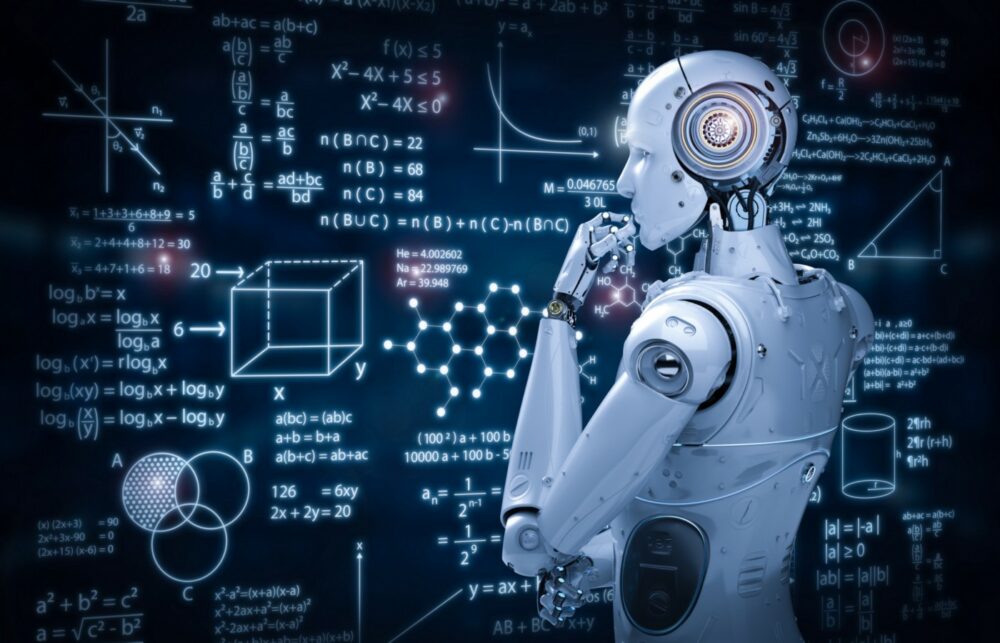
Well, the Machine Learning Model is a geometrical analysis and mathematical presentation of any work procedure or problem. It requires a lot of data and algorithms to get the desired outcome. The purpose of creating the model is to get insight from data to make better business and production decisions. Machine Learning analyzes prescriptive, predictive, and descriptive analytics by analyzing statistical and mathematical data. The difference between the Machine Learning Model and the algorithm is clear. In our learning sequence, we will attempt to explain the distinction and conclude by describing the best 19+ Machine Learning Models and their applications.
Difference Between Machine Learning Model And Algorithm
At the outset of the study, it is preferable to eliminate any confusion between ML Model and the algorithm. Because for novices like me, it creates a lot of confusion. model and algorithm are dissimilar. When algorithms are trained with data, a model is created. Well, the learning model is a structure or equation, whereas the algorithm is a set of standardized principles for constructing the model. To make a model, one or more algorithms are required. For example, we may express the equation as follows:
Model = Training (an Algorithm + Data)
19+ Best Machine Learning Models To Try
Machine Learning Models are used to plot any real-world problems. It is expressed statistically, geometrically, and mathematically, among other methods. Today we will cover the best 19+ Machine Learning Models for solving real-world problems.
1. Non-Linear Basic Model
When the equation does not satisfy any criterion, it is considered a Non-Linear Basic Model. Non-linear describes the reverse of linear. The length of the non-linear data makes it difficult to plot it on a graph. Non-linear accuracy is far more complex than it seems. Observational data for the non-linear Machine Learning Model are constructed using a formula in which the model parameters are more independent. The model is described by:
y ~ f(x,β)
2. Linear Model
The Linear Model is the relationship between two values expressed by an equation demonstrating a constant rate of change. Using a Linear Function is used to make predictions. When each component is either a constant or the product of a parameter, and the predictor variable is also constant, we refer to the relationship as linear. Finally, the linear equation is constructed by summing up all the findings.
Result = constant + parameter * predictor + … + parameter * predictor
Y = b o + b1X1 + b2X2 + … + bkXk
Linear models come in several types. The like:
1 – Ordinary Least Squares.
2 – Ridge regression.
3 – Lasso.
4 – Multi-task Lasso.
5 – Elastic-Net.
6 – Multi-task Elastic-Net.
7 – Least Angle Regression.
8 – LARS Lasso.
9 – Orthogonal Matching Pursuit (OMP).
10 – Bayesian Regression.
11 – Logistic regression.
12 – Stochastic Gradient Descent – SGD.
13 – Perceptron.
14 – Passive Aggressive Algorithms.
15 – Robustness regression.
16 – Polynomial regression.
3. Support Vector Machine Model
It is a supervised Machine Learning Model used to solve regression and classification problems. Support Vector Machine is a kernel technique to transform data and find the appropriate output boundary. Support Vector Machine Model is used when the number of dimensions exceeds the number of samples. It works flawlessly with a distinct separating margin in high-dimensional areas. However, it could be better for large data sets since training requires more time. On the other hand, it only functions well when there is noise, bias, and variation.
4. Ensemble Model
Ensemble Model combines many learning algorithms for optimal performance. It is an ML Model type that mixes many models. Compared to a single model, its prediction is superior. The organizers of several Machine Learning competitions, including the Netflix Competition, KDD 2009, and Kaggle, employ this model. Noize and variance Machine Learning errors may arise due to bias. Ensemble Model reduces these variables to increase precision and stability. It is used in several ML hackathons to improve prediction abilities. The drawback is that it requires additional time for computation and design.
5. Decision Trees
A tree has several analogs to real-world problems. With varied circumstances, the Machine Learning Model may be compared to a tree-like model. To impact decision making, this model visually depicts many scenarios. ML employs a potent technique for classification and prediction. Because it can develop comprehensible rules for decision making, accomplish classification without requiring much computation, and handle both continuous and categorical variables. The decision tree is easy to comprehend, analyze, and conceptualize. It can process numerical and categorical data as well as multi-output problems. It is characterized as overfitting when it creates overly complicated trees. Where the value is continuous across several dimensions, the decision tree is difficult to employ. Its implementation is costly.
6. Deep Learning
The word “Deep” refers to several algorithms in a concealed layer (Sometimes over 100). This Machine Learning Model uses neural networks. There are numerous types of deep learning, including supervised, semi-supervised, and unsupervised. It is a type of artificial intelligence that makes decisions based on patterns like the human brain. This ML subset is considered a deep neural network or learning. Deep learning incorporates data from several sources, such as an internet portal, search engine, social media platforms, and the cloud. These data constitute a platform known as big data. avegek With the big data model, artificial neural networks, often known as artificial intelligence, function similarly to the human brain. It resembles the human brain but works in a matter of seconds. It is so huge that it would take a thousand years to comprehend the typical human brain.
7. Multiclass Classification Model
Multiclass classification is a subset of classification consisting of multiple classes. If confirmed, just one label should be placed on a single sample. If we use color as an example, it should be red, blue, or a single color. However, both can exist at different times. Multi-label classification is considered when many labels are employed to predict each event.
8. Classification Model
The model of supervised Machine Learning governs classification. This model is used in several domains, such as identifying client groups, assuring the security of bank loans, predicting your child’s test performance, and determining if an email is spam or genuine. Using this model, you can also predict the property price depending on location, whether or not the monsoon will occur the following year, how many books will be sold the following year, etc. Binomial and Multiclass models are the two classification types.
9. Neural Networks
Neural networks are a common Machine Learning Model based on biological neural networks. It does not function according to task-specific rules. Also called an artificial neural network (ANN). Several industries can use ANN, including video game play, voice recognition, machine translation, social network filtering, and medical diagnosis. There are several Neural network architectural types in Machine Learning, including:
1 – Perceptrons.
2 – Convolutional Neural Networks.
3 – Recurrent Neural Networks.
4 – Long / Short-Term Memory.
5 – Gated Recurrent Unit.
6 – Hopfield Network.
7 – Boltzmann Machine.
8 – Deep Belief Networks.
9 – Autoencoders.
10 – Generative Adversarial Network.
10. Regression Model
When numerical values are the objective, we employ the Regression Model. It’s the relationship between a single independent variable and one or more independent variables. Amazon is one of the best providers of Machine Learning services globally. This industry-standard model is known as “linear regression.” This Regression Model may be used to address a problem of problems. For instance, if you wish to know the next day’s temperature, the number of items sold the following month, or the price of your home, depending on the neighborhood, you may use predictive analytics.
11. Adaptive Resonance Theory
It is a subset of the neural network Machine Learning Model for pattern identification and prediction. In 1987, Stephen Grossberg and Gail Carpenter were the first to create it. Excitingly, K-means clustering constantly learns new input patterns while remembering the old ones. Several types include ART1, ART2, FuzzyART, ARTMAP, and FARTMAP.
12. K-means Clustering
K-means clustering is widely used in data mining for cluster analysis. It is a Machine Learning technique that creates a set of observations centered on geometric centers. K refers to the number of clusters identified by the individual doing the analysis. For example, this Machine Learning Model may segment a product difference indicator.
13. Q-learning
The Q-learning model is a subset of the Reinforcement Machine Learning Model, in which it instructs its agent to take action depending on various conditions. Without modification, this ML Model is capable of handling any problem. Without a predetermined policy, this off-learning reinforcement model gives the best action for the current situation. The meaning of the word “Q” is the output quality. The Q table presents the output.
14. Reinforcement Learning
Reinforcement learning is a well-known Machine Learning Model that maximizes rewards in a given circumstance. Doing a certain action is used to find the optimal action and enhance performance. It differs from data-input-based supervised learning in a significant difference. When there is no input, it works with its prior knowledge. The reinforcement learning model is used in manufacturing, inventory management, delivery management, the financial sector, and power systems.
15. Probabilistic Model
Probabilistic model is the Machine Learning Models. Using random variables, this potent phrase represents the actual reality. It works with random variables, the normal distribution, the binomial distribution, and the Bernoulli distribution. The statistician uses this model in the computation for life insurance. It is used extensively in Machine Learning for data analysis and data science.
16. Bayesian Network
It is a traditional probabilistic approach that uses a graphical model to express problems. There are two components: structure and parameters. It is a joint probability distribution that gives a representation that is compact, flexible, and interpretable. A concise, flexible, and interpretable depiction. The Bayesian Network has a random variable and a graph structure that encapsulates the interdependence between variables. The graphic presentation will clarify the notion.
17. Cross Decomposition
Cross decomposition is an advanced Machine Learning Model that employs two algorithm types: partial least squares (PLS) and canonical correlation analysis (CCA). This linear model relationship between the X and Y multivariate datasets. The output is shown as a scatterplot matrix.
18. Nearest Neighbor
Nearest Neighbor is an indispensable and potent Machine Learning Model that is easy to construct and solve regression and classification models. Additionally, it is employed to solve industrial problems. It is the simplest classification algorithm that requires little calculation time. The nearest Neighbor is often recognized as the model for sluggish learners.
19. Naive Bayes
The next Machine Learning Models to be discussed today is the Naive Bayes model. It is a method for developing classifiers. This supervised Machine Learning technology has been in use since 1960. This model applies to the pharmaceutical sector. It may also be used to categorize various Machine Learning Models.
20. Gaussian Processes
Gaussian Processes are used as a potent model for the Machine Learning toolbox. It creates data based on past knowledge. It has applications in robotics and time series analysis. This model works as a regression analysis but is not restricted to regression analysis since it is also applicable to classification and clustering tasks. In addition, it is employed for the probability distribution, marginalization, and conditioning.
The Bottom Line:
There are various Machine Learning Models for addressing real-world problems. All of the Machine Learning Models are optional for you. However, since it is a big region, you must be specific. On the other hand, the needed language for Machine Learning is also particular, such as Python, R, or Java. Today’s presentation aims to give you a general understanding of the ML model concept.








